Ever since the Horton Plains was declared a National Park in 1988; so was the influx of busloads of visitors to view the famous escarpment named the World’s End. Its a pity that most visitors only come here to view the precipices and the Baker’s Fall. They seem to be ignorant of the fauna and flora that is unique to the plains and its pre-history.
 |
| People come here in buses, vans, cars |
Be that as may ……..with the human visitor there came on the plains the Jungle Crow that is known to keep company with humans. The crow is also known as an indicator species on the changing environment. A close ally with trash and garbage .
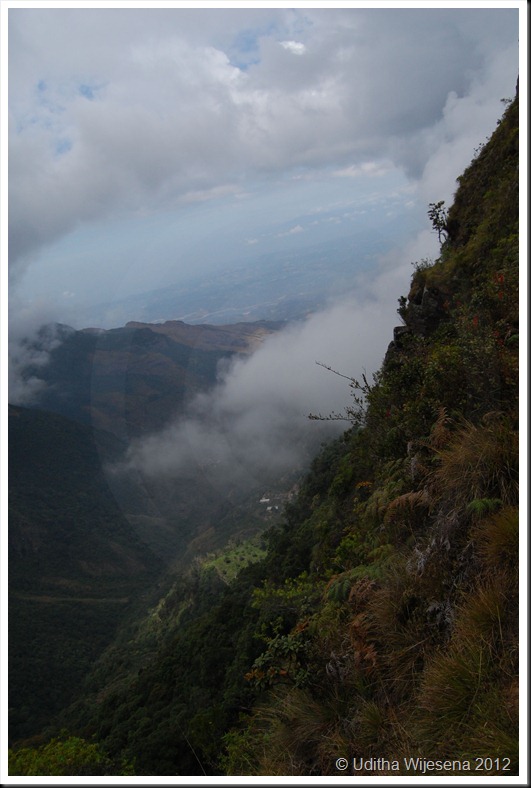 |
| Little World's End Escarpment |
Food and water was permitted on the 9 km trek to the World’s End and back for the weary traveller who was hungry and thirsty. Part of this food was left on the plains as waste on which the crows feasted.
Today the authorities are more concerned and they do not allow food in wrappers in the park and much of the unconsumed food come back in the backpacks the visitor carries along. Thus the crow is not directly dependent on the waste food.
It has now adapted a new survival strategy………………..
Animals are said to make strange and odd partnerships. These strange relationships are needed for their safety and to overcome the struggle for existence. They are know as Symbiotic Relationships in the study of Field Biology. One animal helping the other to meets its needs.
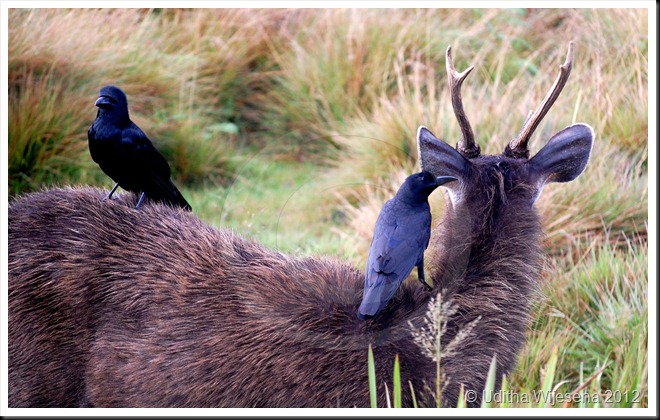 |
| A Symbiotic Relationship |
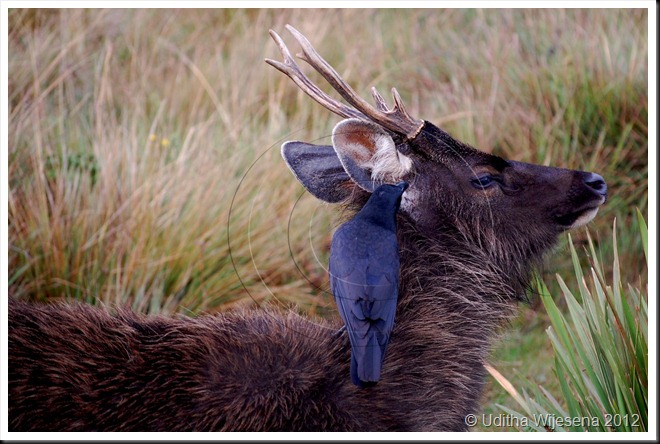 |
| Looking for the tick |
The Jungle Crow that came on the plains has now made a symbiotic relationship with the Sambar Deer. It is interesting to note that the tick on the Sambar Deer that guzzles its blood is also a symbiotic relation, but the ticks do not help their host; instead they pass germs that cause disease.
On the other hand the symbiotic relationship of the crow with the sambar deer is a favourable one as the crow consumes the disease causing tick.
The crow on the Plains will adapt to its needs
The Jungle Crow being a omnivore would adapt to most conditions and this Jungle Crow in the plains is going to stay there for a very long time. This is because animals know best, the means of survival living together with other species of animals.

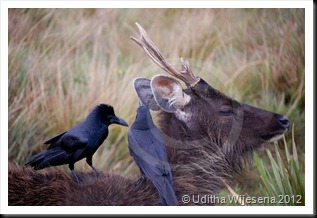
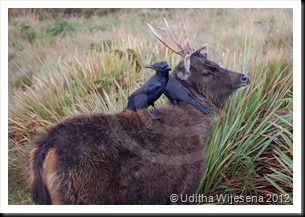
Very interesting observation! I am certain, I will look at the environment differently when I come this year. I have a question about the Little World's End Escarpment photo. Are colors of the plants/trees of autumn colors? if it is not transitional colors, what are those colorful plants / trees? Thanks.
ReplyDeleteTransitional colors are to be seen in the flora of the cloud forest up there. However what is seen in the picture are dried foliage of the ferns and 'mana' grasses. The reds are the Rhododendron flowers. It had not rained for quite a long time. Also the global warming seem to have it's impact; some trees are dying . I have some pics on them which I will post shortly in comprehensive report.
ReplyDelete